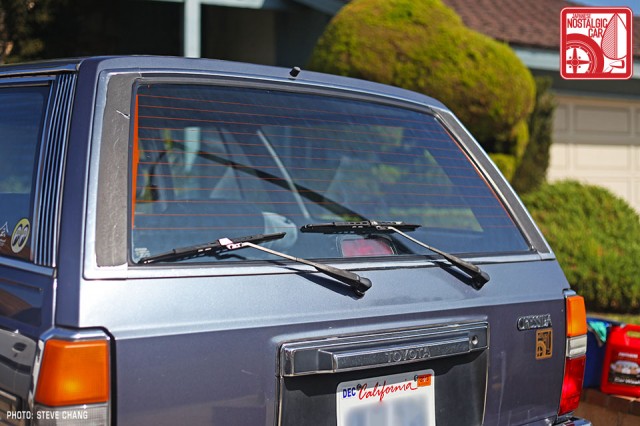
Fasten your seatbelts, cause we’re about to enter super-ultra-otaku mode on the scintillating topic of Toyota windshield wipers. Along the way we discover that even when you buy Toyota parts from a Toyota dealer and it says Toyota on the packaging, it’s not always original.
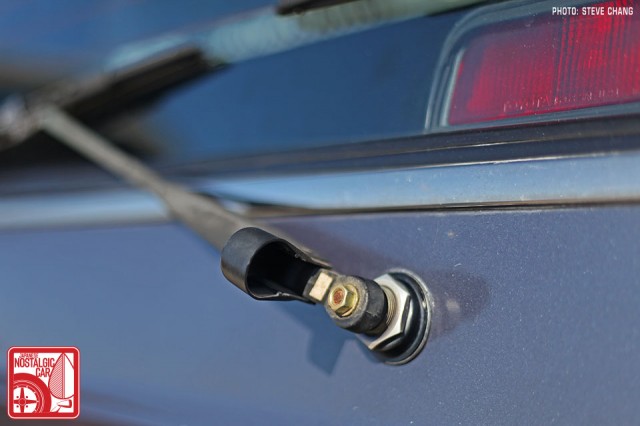
This all started when one of the rear wipers on our 1986 Cressida shop wagon became misaligned. Yes, I say “one of” because among the coolest Bubble Economy excesses of the MX72 was not one, but two rear windshield wipers.
The mechanism could not be simpler. Under a hinged plastic shroud (careful, it gets brittle after 27 years) is a nut that holds the wiper arm to a splined shaft turned by the wiper motor.
The teeth in the wiper arm had been worn and no longer meshed with the splines. Problem is, third-gen wagons are kind of rare. Judging by the wholly unscientific metric of wagon-to-sedan ratio in SoCal junkyards, we estimate that from 1985-88 Toyota sold just one Cressida wagon for every 40 sedans.
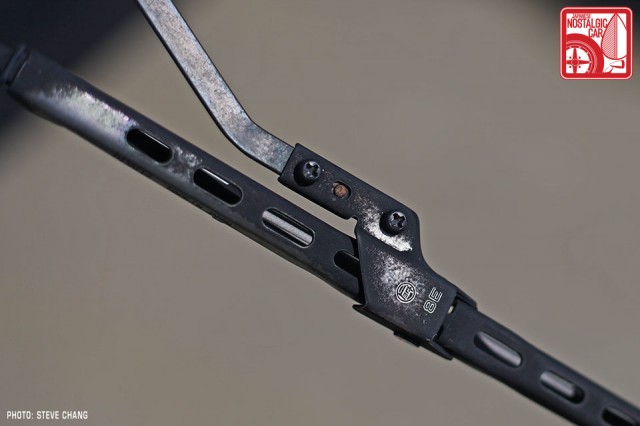
Compounding the issue was the fact that we are sticklers for originality. Do you know how to tell an original Toyota wiper from a vulgar, common Anco? Real Toyota blades have a tiny vintage circle katakana “トヨタ” logo stamp where it attaches to the arm by two tiny, extremely-easy-to-lose Phillips head screws.
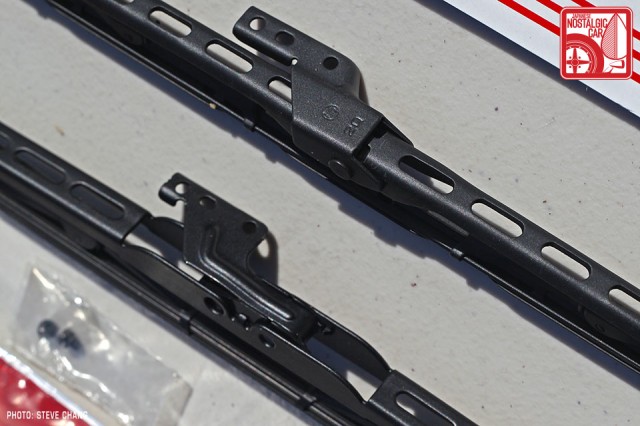
See, for example, this pair of AE86 wipers that we ordered from our friends at Cabe Toyota. One comes with the old school katakana logo on it, one doesn’t. In addition, the logo-fied one has a proper classic Toyota hinge, whereas the logo-less, presumably newer, hinge looks like a cheapo piece of stamped scrapmetal from a random supplier, probably forged in the same sweatshop that spits out the wiper brands available at your local Wal-Mart.
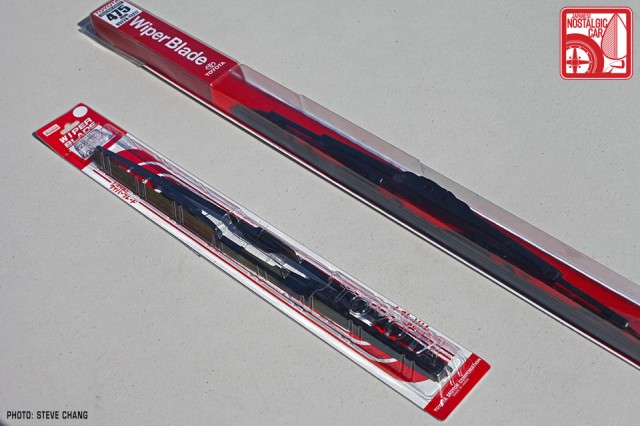
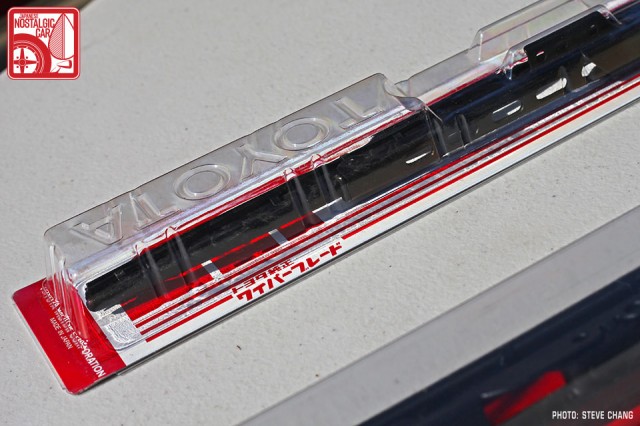
Check out the packaging, too. The old school wiper’s is a work of freakin’ art. Behold its retro stripes. The molded plastic even resembles a 4A-GE valve cover and comes with a slot to hold the blade in place lest it flop around in the box.
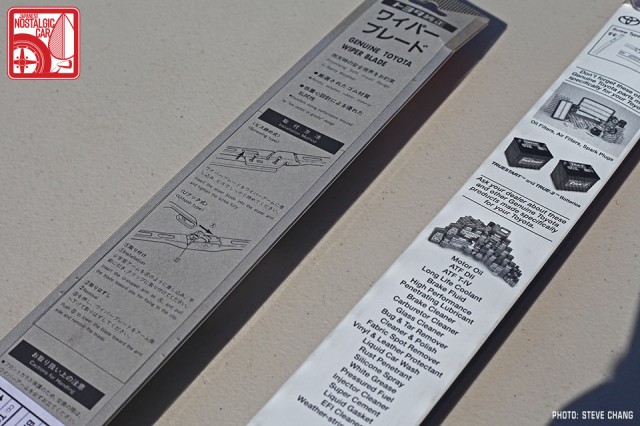
And of course, it has a bunch of Japanese writing all over it to make it JDM tyte, yo. This kind of thing happens all the time. For cars this old, parts are discontinued or sold out and their part numbers substituted with a newer, less good replacement.
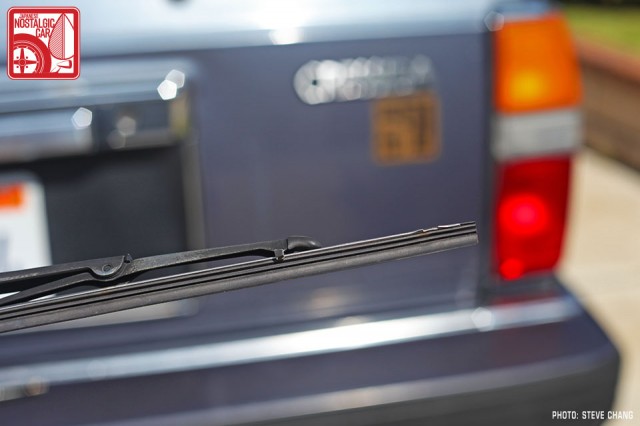
In the old days you could just buy the rubber wiper inserts. All you had to do was squeeze the metal tabs out from the legs to slide the old ones out, and the new ones slid right in.
Nowadays you are forced to buy the whole blade at most retailers, so most older cars have had their original blades cast off into the landfill at some point. You can, however, still order the inserts from most dealers, but restorers like us will still have to find the OG blades to have something to insert the inserts into.
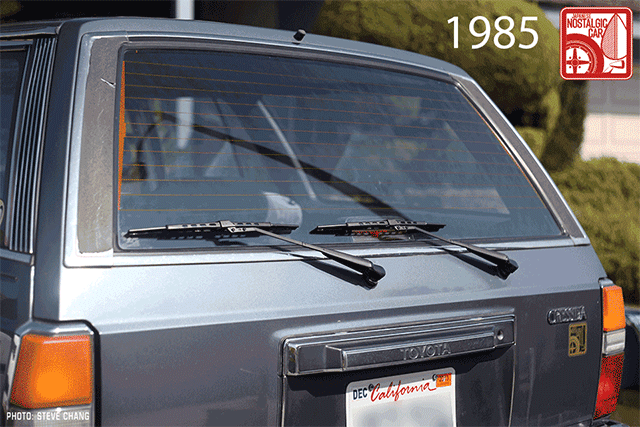
We were pretty stoked to finally find a pair of rear wipers from a 1985 Cressida wagon. Imagine our surprise then, when we discovered that Toyota had changed the rear wiper design just one year into the third generation!
Turns out, the culprit was the CHMSL. Starting in 1986, the federal government mandated that all new cars had to come equipped with a center high-mounted stop lamp. 1985 rear wipers would obscure the third brake light, so Toyota made longer wiper arms starting in 1986. Argh.
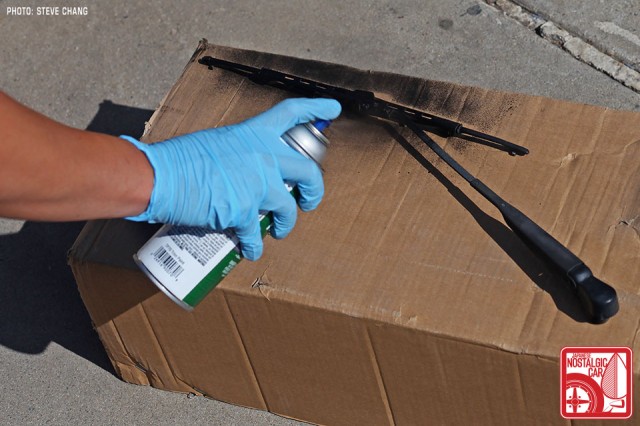
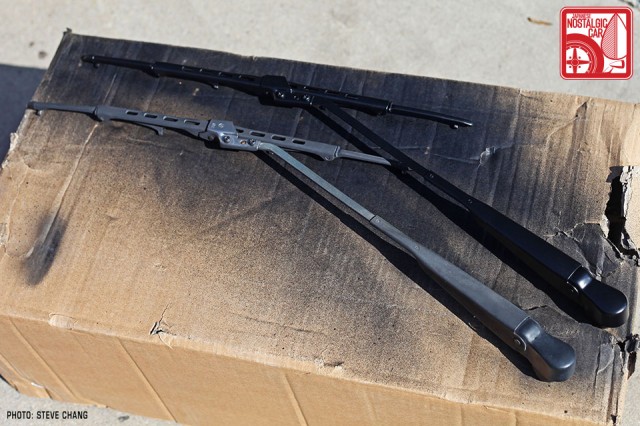
In the end we did find a pair of proper 1986 blades in a junkyard, but they were pretty faded. A quick spray coat of flat black and they were good as new.
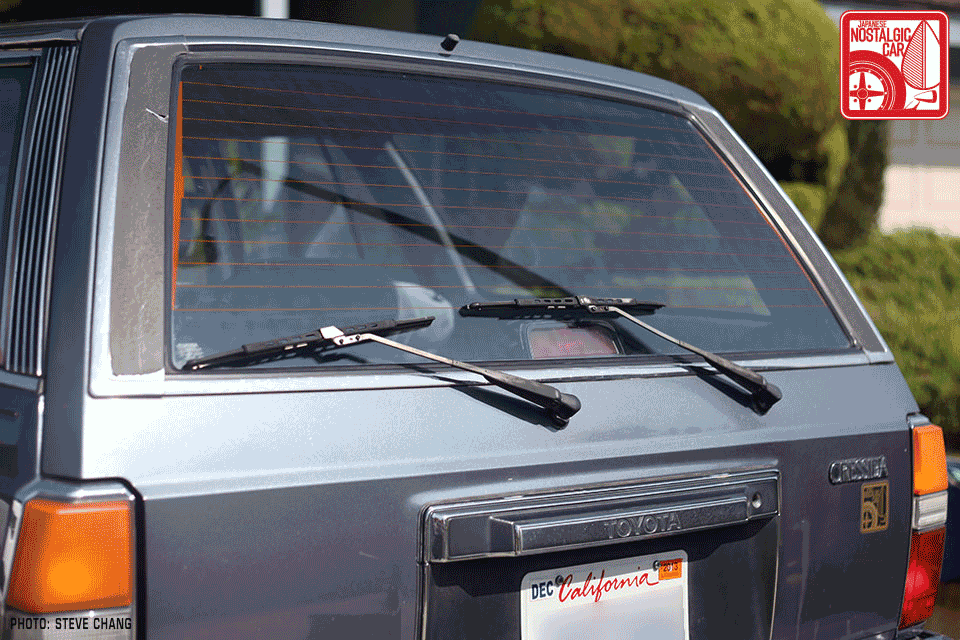
Voilà! So there you have it, probably more than you ever wanted to know about windshield wipers. We’ll have more of these types of articles from now on, so stay tuned for the next gripping installment (no pun intended).






Did not know that one person could talk that much about wiper blades.
(Cressida wagons are rare). Next up window crank handles.
Funny you know, but I often skim over the What Type of Engine Swap Matches the Best Classic Celebrity quizzes, but avidly read every word of this! I guess there are otaku AND otaku… Neko.
Love all this site has to offer, and now after years have i found the AMAZING Kuroneko???
I have a rare honda zoomer in Australia and used to love reading a scooter website down here and Kuroneko used to submit amazing photos from Japan, wow if you read this kuroneko i would dearly love to chat with you further regarding the awesomeness of japan and your images.
Thanks a bunch – Mark – markblaney@hotmail.com
Mark, Kuroneko, aka Skorj, has contributed dispatches from Japan for a long time here at JNC. Here are some of his past articles: http://japanesenostalgiccar.com/author/skorj/
Toyota did this with most of there “big wagons”. Camry’s get the same treatment.. Always thought it was rather odd. If you go fast enough, you never have to worry about who is behind you. hahahaa.
single wiper on my toyota wagon. i doubt i’d ever be able to find a replacement. ever.
I love the OCD’ness of automotive obscurity. Don’t get me started about 1st Gen 510 wagon gas caps…
Never thought of wipers like that haha …reminds me I need more rainx
Haha, love this! But are those Philips screws or JIS?
I was under the impression that JIS screws would have a dot on them. There was not dot, but you raise a good question! More research needed.
JIS stopped being used to make cars in Japan in the early 1970s? M (SI) took over? Phillips of course being merely the head configuration, not a function of pitch or diameter? Unless JIS were never Phillips (or ‘plus’ in Japan), which they may not have been until Honda I think imported plus-heads to Japan in the 1960s…
I believe there is some difference in the angle of cross-section of the “plus”. I think the valley at the bottom of the plus is more curved on a Phillips, more beveled on a JIS. Supposedly using a Phillips screwdriver on a JIS will have a greater chance of stripping it.
That’s what I understood, a Philips screwdriver is designed to cam out under a certain torque, which seems to be more suitable for automatic screwdrivers in the assembly line. This is also why Philips screwdrivers strips JIS heads.
I found a lot of JIS screws (with dot) in my ’75 TA22, but also a lot of Philips screws. Kind of a mystery what head they preferred, but the smaller ones tend to be JIS more often.
I put newer solid rubber blades on my FB – i had them on my old Focus and loved them, so i figured it’d be a sweet old-meets-new sorta thing.
nope. looks whack. definitely stick with the OG’s!
Nice mini-resto! This is the kind of detail that matters! Not only does it respect the tiny changes the engineers made from year to year (or frequently in the case of Toyota, from month to month), but the original items nearly always work the best.
If you want to see an oddball redesign resulting from the arrival of the CHMSL, find yourself a 2G Accord sedan from the final week or so of Ohio production. The CHMSL regulation ostensibly went into effect for the 1986 model year, but technically it applied to all cars produced after September 1, 1985. That means a tiny run of pre-changeover 2G Accord sedans came with the brake lamp on the rear shelf — along with a unique rear window glass with the defroster grid shaped to go around the CHMSL. I can only imagine the engineering costs that entailed, and I wonder if any survive.
great stuff Ben!
The 85s look better. I would use them. Use what the manufacturer originally wanted on the car, not what some government tool told them to use instead.